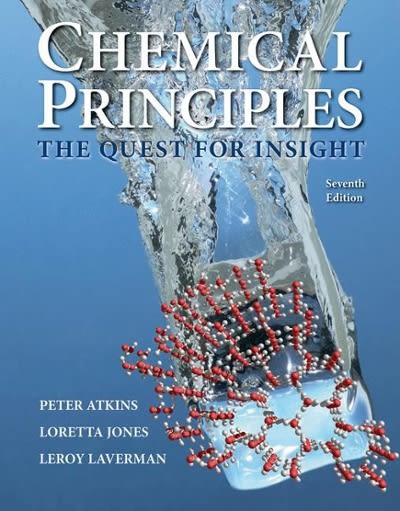Suppose you are developing a radiation detector to be used on a spacecraft and decide to use
Question:
Suppose you are developing a radiation detector to be used on a spacecraft and decide to use a thin layer of metallic potassium to detect certain ranges of electromagnetic radiation. You need to make some estimates of the physical properties involved. The speed of an electron emitted from the surface of a sample of potassium by a photon is 668 km · s-1.
(a) What is the kinetic energy of the ejected electron?
(b) The work function of potassium is 2.29 eV. What is the wavelength of the radiation that caused photoejection of the electron?
(c) What is the longest wavelength of electromagnetic radiation that could eject electrons from potassium?
ANTICIPATE You should anticipate only that the wavelength of the radiation used (part b) must be less than or equal to the longest wavelength of radiation that can eject electrons from potassium (part c), as the longest wavelength corresponds to photons with the minimum energy required for the ejection.
PLAN (a) Find the kinetic energy of the ejected electron from Ek = 1/2mev2. To use SI base units (which is often a sensible strategy in calculations), first convert the speed to meters per second. (b) The energy of the ejected electron is equal to the difference in energy of the incident radiation and the work function (Eq. 3). The photon needs to provide enough energy to eject the electron from the metal (the work function) at a speed of 668 km · s-1. Convert the value of the work function into joules and use Eq. 2 to determine the value of h" for the photon. Then use λv = c to convert that energy to wavelength. Conversion factors and fundamental constants can be found inside the back cover of the book. (c) The longest wavelength of radiation that can eject electrons from a substance is the wavelength that results in the ejected electron having zero kinetic energy.

Step by Step Answer:

Chemical Principles The Quest For Insight
ISBN: 9781464183959
7th Edition
Authors: Peter Atkins, Loretta Jones, Leroy Laverman





